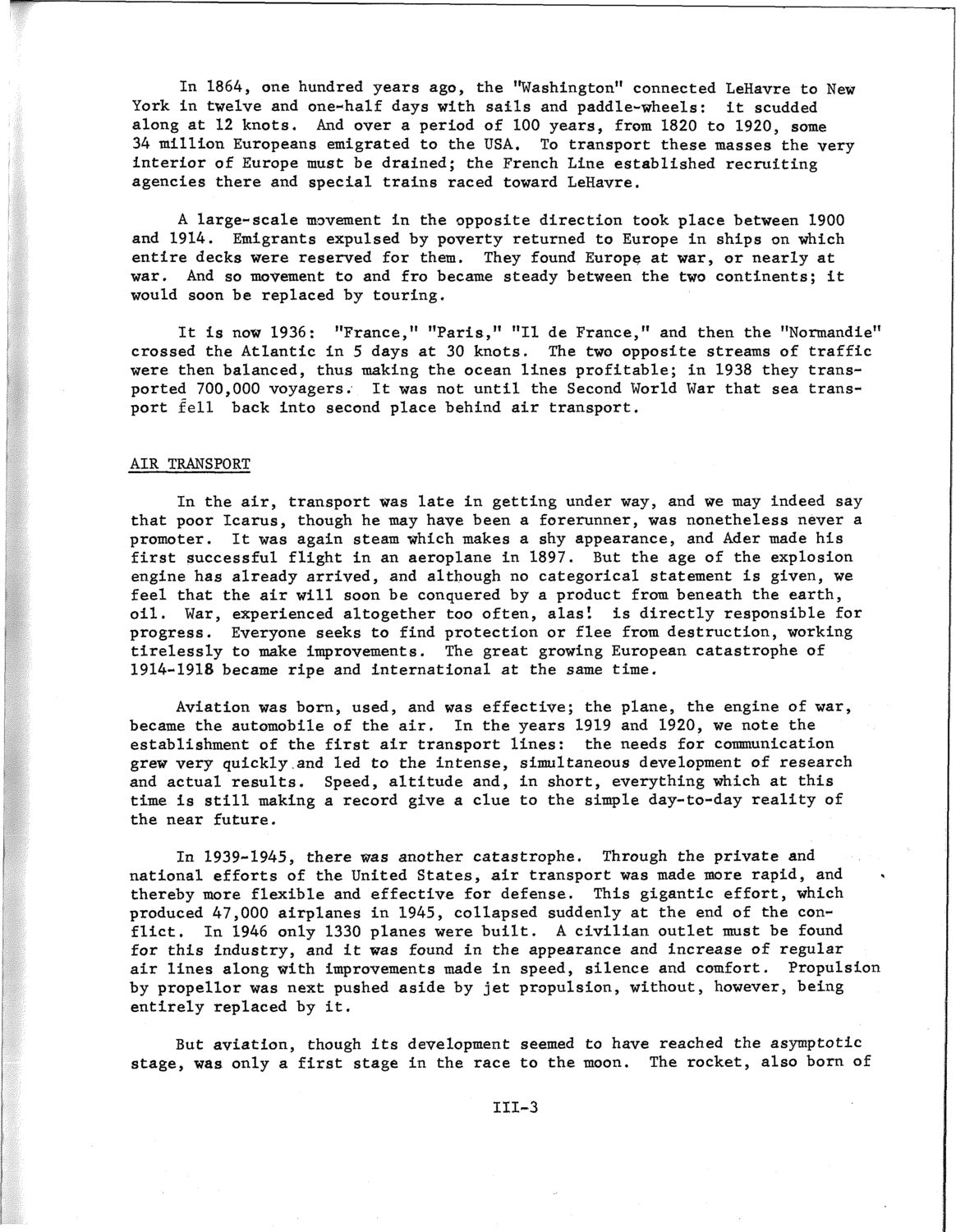| |
| |
Caption: SWE - Proceedings of the First International Conference of Women Engineers and Scientists
This is a reduced-resolution page image for fast online browsing.

EXTRACTED TEXT FROM PAGE:
In 1864, one hundred years ago, the "Washington" connected LeHavre to New York in twelve and one-half days with sails and paddle-wheels: it scudded along at 12 knots. And over a period of 100 years, from 1820 to 1920, some 34 million Europeans emigrated to the USA. To transport these masses the very interior of Europe must be drained; the French Line established recruiting agencies there and special trains raced toward LeHavre. A large-scale movement in the opposite direction took place between 1900 and 1914. Emigrants expulsed by poverty returned to Europe in ships on which entire decks were reserved for them. They found Europe at war, or nearly at war. And so movement to and fro became steady between the two continents; it would soon be replaced by touring. It is now 1936: "France," "Paris," "II de France," and then the "Normandie" crossed the Atlantic in 5 days at 30 knots. The two opposite streams of traffic were then balanced, thus making the ocean lines profitable; in 1938 they transported 700,000 voyagers. It was not until the Second World War that sea transport fell back into second place behind air transport. AIR TRANSPORT In the air, transport was late in getting under way, and we may indeed say that poor Icarus, though he may have been a forerunner, was nonetheless never a promoter. It was again steam which makes a shy appearance, and Ader made his first successful flight in an aeroplane in 1897. But the age of the explosion engine has already arrived, and although no categorical statement is given, we feel that the air will soon be conquered by a product from beneath the earth, oil. War, experienced altogether too often, alas1, is directly responsible for progress. Everyone seeks to find protection or flee from destruction, working tirelessly to make improvements. The great growing European catastrophe of 1914-1918 became ripe and international at the same time. Aviation was born, used, and was effective; the plane, the engine of war, became the automobile of the air. In the years 1919 and 1920, we note the establishment of the first air transport lines: the needs for communication grew very quickly.and led to the intense, simultaneous development of research and actual results. Speed, altitude and, in short, everything which at this time is still making a record give a clue to the simple day-to-day reality of the near future. In 1939-1945, there was another catastrophe. Through the private and national efforts of the United States, air transport was made more rapid, and thereby more flexible and effective for defense. This gigantic effort, which produced 47,000 airplanes in 1945, collapsed suddenly at the end of the conflict. In 1946 only 1330 planes were built. A civilian outlet must be found for this industry, and it was found in the appearance and increase of regular air lines along with Improvements made in speed, silence and comfort. Propulsion by propellor was next pushed aside by jet propulsion, without, however, being entirely replaced by it. But aviation, though its development seemed to have reached the asymptotic stage, was only a first stage in the race to the moon. The rocket, also born of III-3
| |